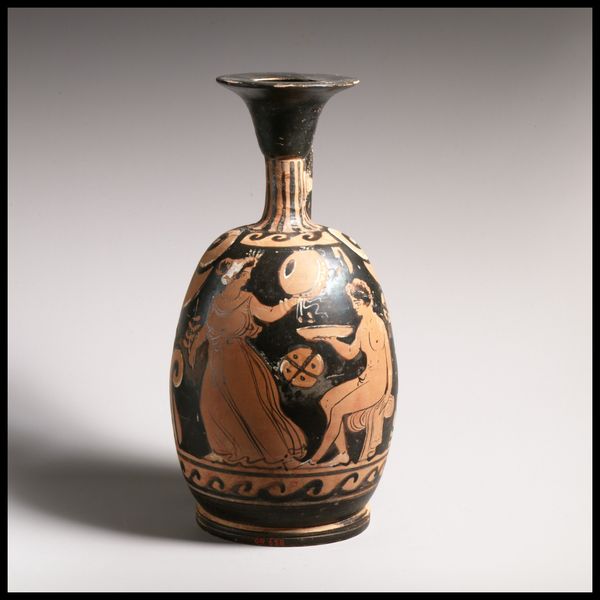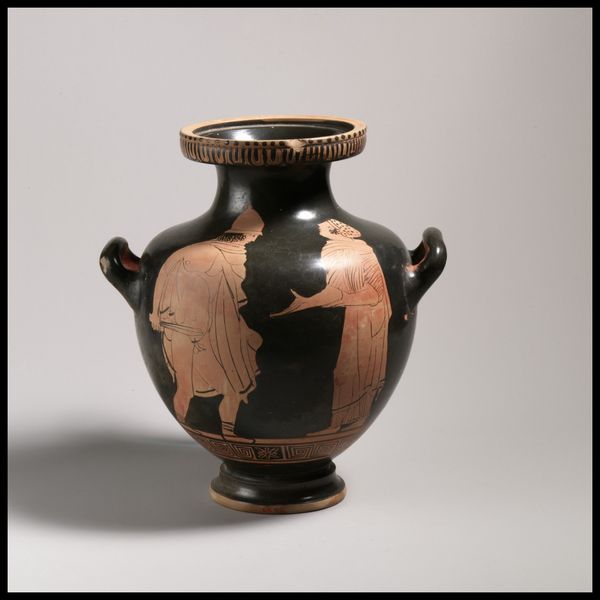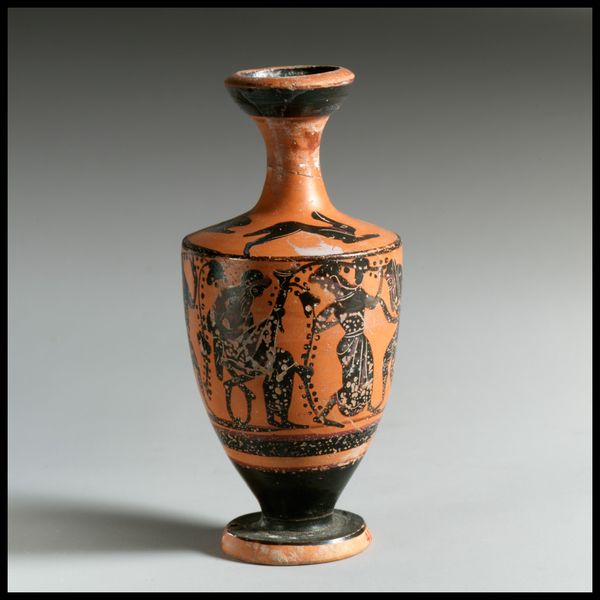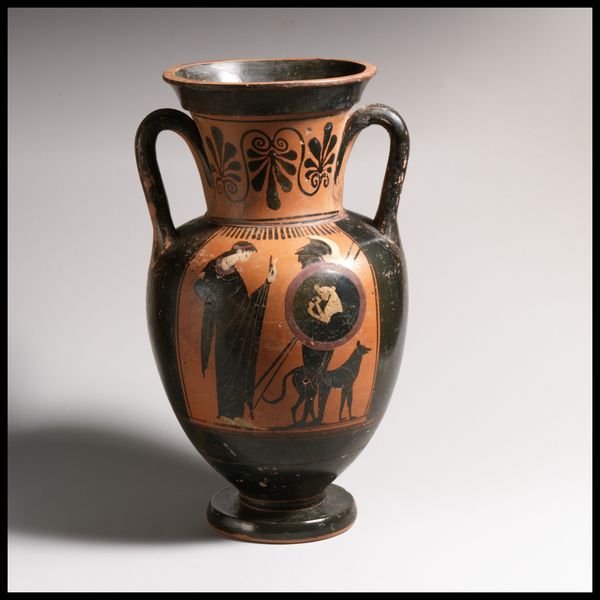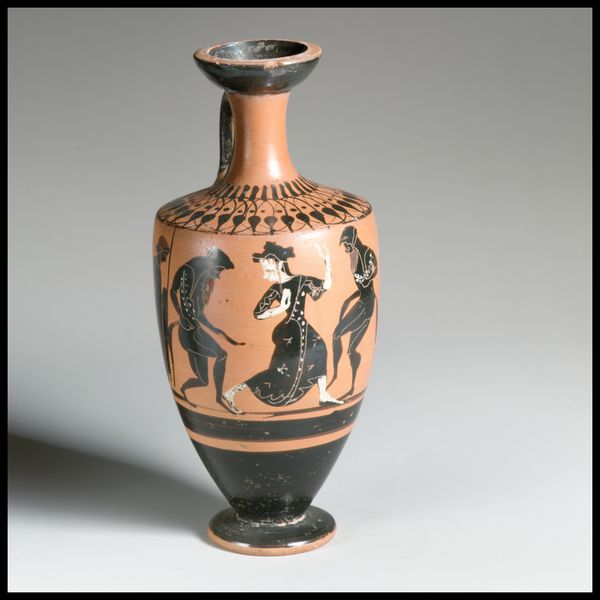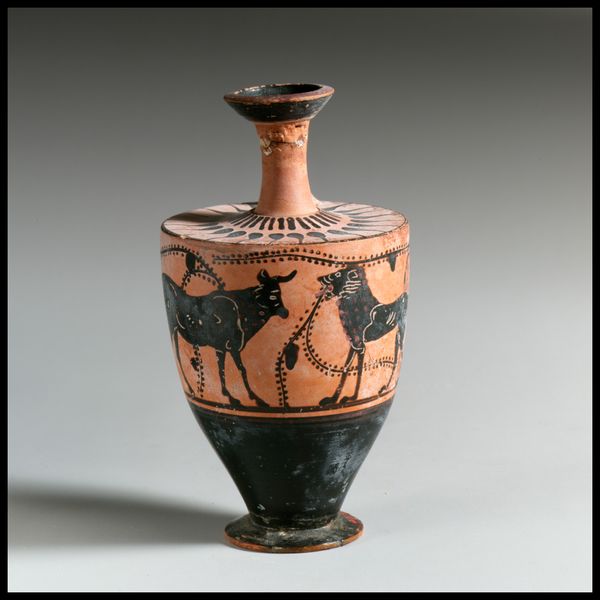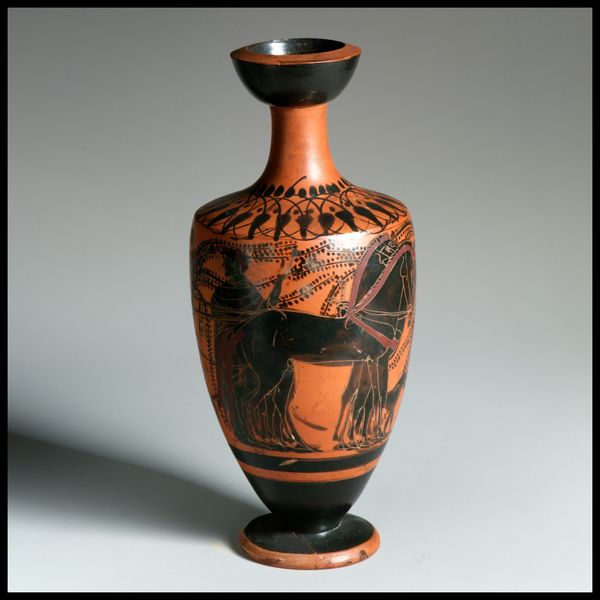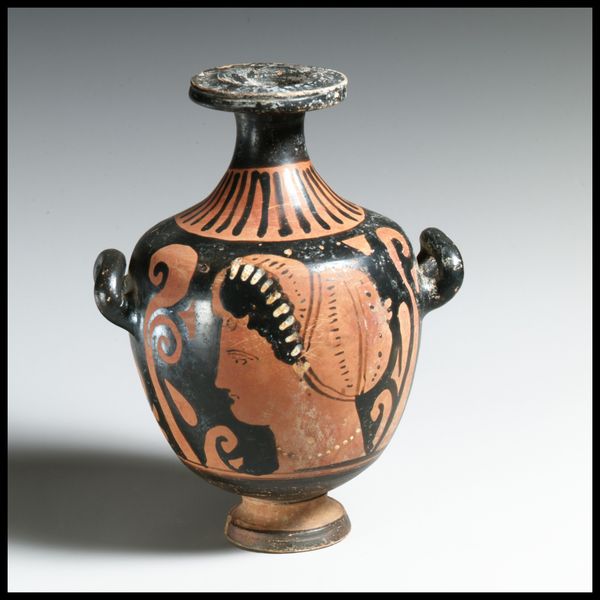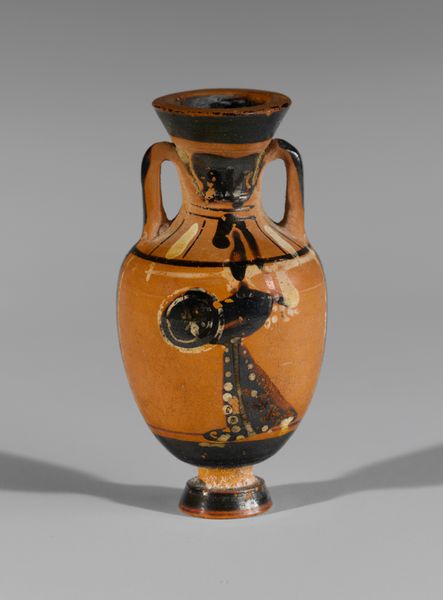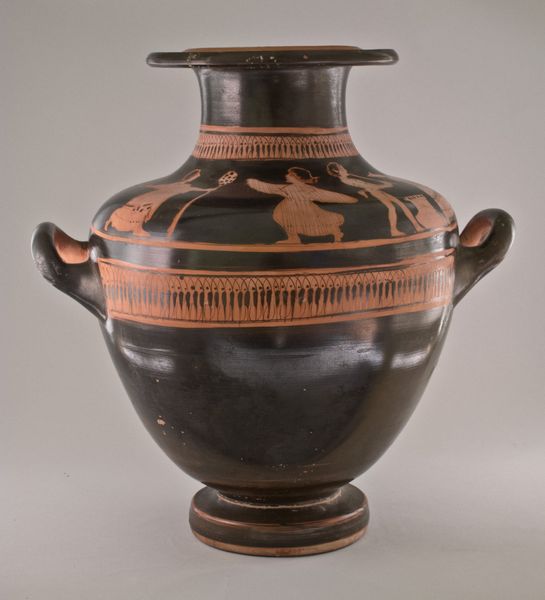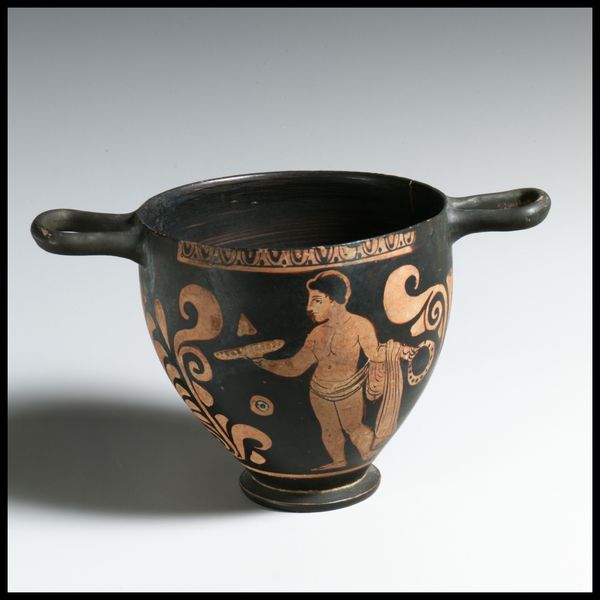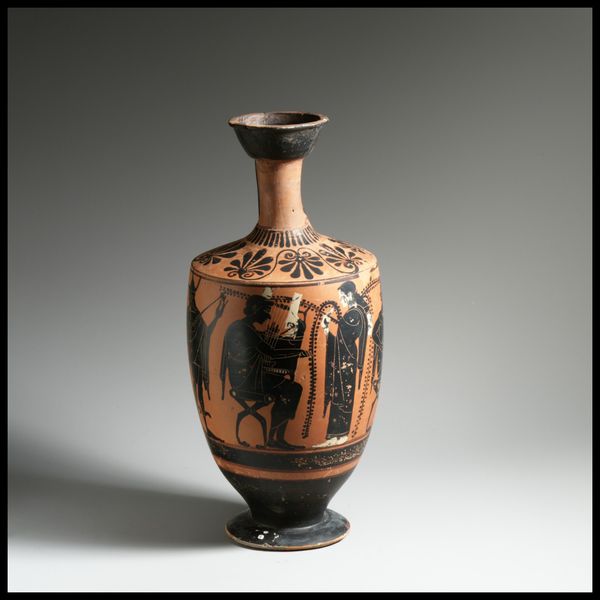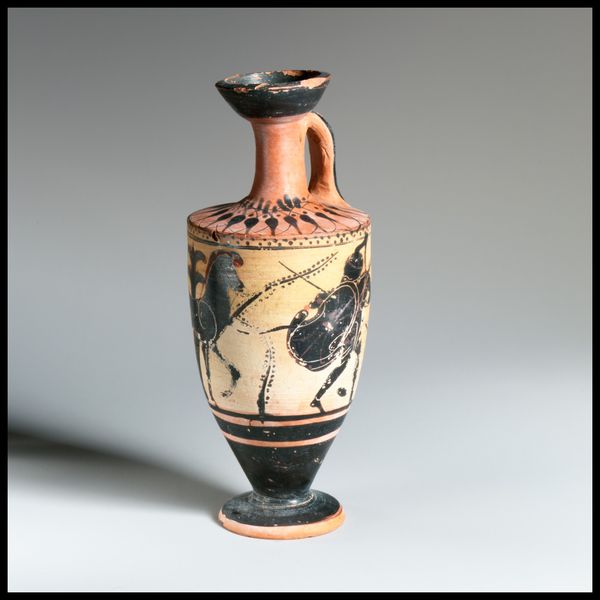
ceramic, earthenware
#
narrative-art
#
greek-and-roman-art
#
ceramic
#
vase
#
figuration
#
roman-art
#
earthenware
#
ancient-mediterranean
#
ceramic
#
earthenware
Dimensions: 9 1/16in. (23cm)
Copyright: Public Domain
Curator: Let’s consider this intriguing object identified as a hydria, dating back to approximately 400 BC, crafted in ancient Greece. Notice the ceramic form; it’s currently held in the collection of the Metropolitan Museum of Art. Editor: The striking contrast between the black ground and the reddish-brown figures immediately catches my eye. There's a somber, contemplative mood evoked by the limited palette, as well as the two subjects depicted on the body. Curator: Indeed, the use of red-figure technique against the black slip provides remarkable visual clarity. Semiotically, the arrangement establishes a deliberate foreground and background, creating a spatial relationship within a flattened picture plane. I read this as representing the classical era's visual paradigm shift, showcasing a nascent attempt toward depth in rendering human subjects, in this instance specifically their narratives. Editor: And who are these subjects and what could they be representing? We see what looks to be two male figures. What were the artist’s intentions by placing one seated and what appears to be a lyre dangling above? In thinking about the larger cultural landscape of this era, I immediately ponder how the image reinforces, perhaps unintentionally, systems of power at play. Curator: The object's materiality—the very texture of the ceramic—adds to its appeal. Furthermore, look at the elegantly painted key pattern on the vase that accentuates its surface. Such ornament represents not merely the capacity to fashion utilitarian objects, but speaks eloquently to the very definition of cultural identity. Editor: But let's not separate the vase from the world in which it was produced. Considering its function – as a water vessel – and its context, does the imagery tell us something about gender roles in Greek society or rituals that women perhaps carried out at the local well? Who exactly was this artwork made for and how were they able to connect with these narratives through visual cues? Curator: Fair point; nevertheless, when viewed formalistically, the work’s careful arrangement of figures, and striking play with positive and negative space, it evokes an aura that has survived the passage of millennia. Its visual impact is truly undeniable. Editor: Agreed, it's undeniably fascinating, prompting me to consider what this seemingly simple vessel tells us about power structures and those who created and used them within specific social conditions.
Comments
No comments
Be the first to comment and join the conversation on the ultimate creative platform.
